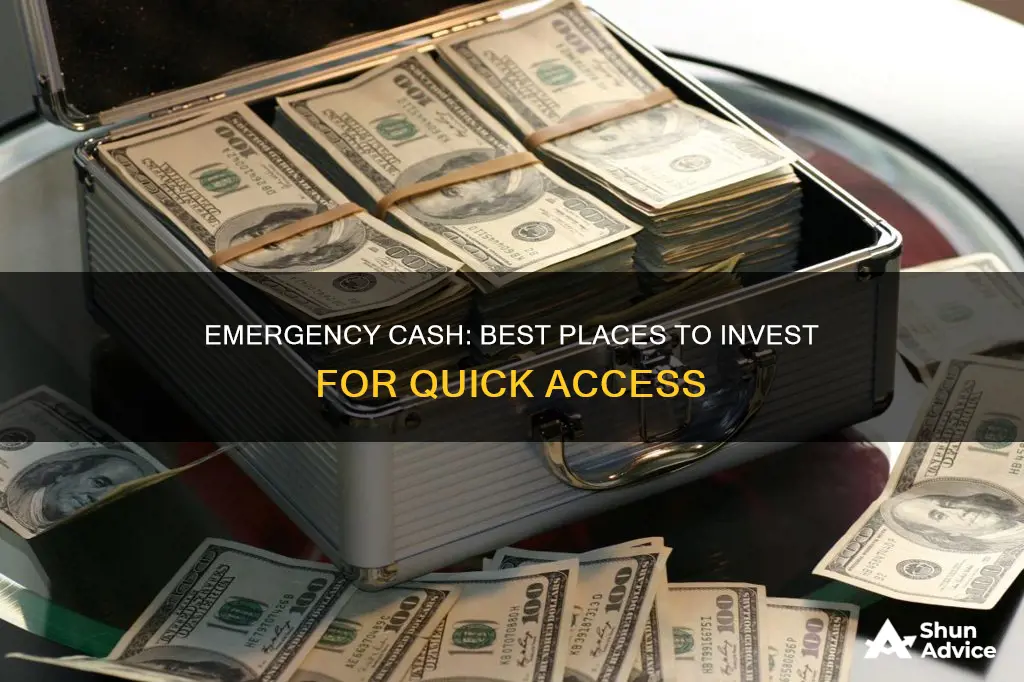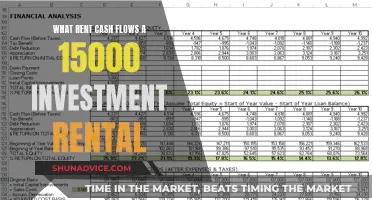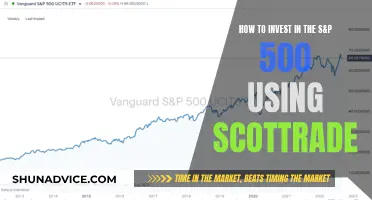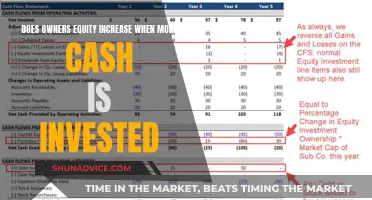
An emergency fund is a financial lifeline that allows you to cover unplanned expenses without going into debt. It is recommended to have an emergency fund that can cover three to six months' worth of living expenses. However, the question of where to invest this emergency cash is a tricky one.
While a traditional bank savings account is a safe option, it may not be the best choice due to low-interest rates that are often below the rate of inflation. On the other hand, investing in the stock market or other volatile assets may be too risky as you may need to sell at a loss in case of an emergency.
Some alternative options for investing your emergency fund include high-yield savings accounts, money market accounts, and certificates of deposit (CDs). These options offer higher interest rates than traditional savings accounts while still providing relatively quick access to your funds in case of an emergency.
Ultimately, the best place to invest your emergency cash depends on your personal financial situation and comfort with risk.
| Characteristics | Values |
|---|---|
| Accessibility | Easy to withdraw funds without delay or penalties |
| Liquidity | Opt for high-yield savings accounts over traditional savings accounts |
| Risk | Avoid volatile investments like stocks |
| Returns | Consider investing in a Roth IRA or a money market mutual fund |
| Safety | Look for accounts with Federal Deposit Insurance Corp. (FDIC) coverage |
What You'll Learn

High-yield savings accounts
- Barclays Tiered Savings Account: This account offers a solid interest rate, and there are no monthly fees or minimum balance requirements. It also has a tool for setting savings goals, which not every bank provides.
- SoFi Checking and Savings: This is a combination checking and savings account that earns an APY of 4.20% on the money kept in the savings portion. SoFi also offers a checking account, so you can keep your spending and savings in the same place.
- CIT Bank Platinum Savings: This account pays 4.55% APY on balances of $5,000 or more. If your balance is lower, it earns a much lower rate of 0.25% APY. There is no monthly fee, but there is a high minimum deposit requirement.
- Openbank High Yield Savings: This account is currently unavailable to individuals who reside in certain states, including CT, DE, MA, NH, NJ, NY, PA, and RI. It offers a much higher yield than the average national savings rate, and there is a minimum deposit requirement of $500.
- UFB Portfolio Savings: This account has no minimum balance requirement and no monthly fees. The yield is much higher than the average national savings rate.
- American Express High Yield Savings Account: This account is offered by the well-known credit card company, American Express. It has a competitive yield, a $0 monthly fee, and a $0 minimum balance requirement.
- Capital One 360 Performance Savings: This savings account earns the same rate on all balances, and there are no minimum deposit requirements or monthly fees. Capital One also offers a checking account that earns interest and has no monthly fees.
- EverBank Performance Savings: This account has a competitive yield, no minimum deposit requirement, and no monthly fees.
When choosing a high-yield savings account, look for accounts that have high-interest rates and low service charges. You should also consider whether you want your checking and savings accounts to be at the same bank.
Computing Investment Cash Flows: A Guide to Statement Analysis
You may want to see also

Money market accounts
Advantages
Disadvantages
One potential drawback of money market accounts is that they may have minimum balance requirements to avoid monthly service fees. For example, the CFG High Yield Money Market account requires a minimum balance of $1,000 to earn interest and charges a $10 monthly fee if the balance falls below this amount. Some accounts also limit the number of withdrawals you can make per month without incurring fees.
When to Choose a Money Market Account
When to Choose an Alternative
If you are solely focused on maximizing the return on your emergency funds and are comfortable with less frequent access, you may want to consider other options like certificates of deposit (CDs) or money market funds, which can offer higher yields but often come with early withdrawal penalties. However, it is important to remember that the primary goal of emergency funds is accessibility and liquidity, so choosing an option that aligns with this goal is crucial.
Retirement Investing: Strategies for Your Cash Reserves
You may want to see also

Certificates of Deposit (CDs)
CDs are federally insured, so your money is protected. The Federal Deposit Insurance Corporation (FDIC) or National Credit Union Association (NCUA) insure most CDs for up to $250,000 per account. This means that even if the bank fails, your money is still safe.
CDs typically don't come with monthly fees, and your money will grow at a fixed rate for the duration of the term. This can be a good thing if interest rates are high when you open your account, but not so good if interest rates drop during the term.
When choosing a CD, consider how long you want to keep your money locked up. CD terms typically range from three months to five years, but some banks offer terms of up to 10 years. The longer the term, the higher the interest rate will be. However, if you need to access your money before the term ends, you will likely have to pay an early withdrawal penalty.
Some banks offer no-penalty CDs, which allow you to withdraw your money at any time without sacrificing any of the interest you have earned. These CDs usually offer a lower interest rate than traditional CDs, but they can be a good option if you want more flexibility.
Overall, CDs can be a great way to grow your emergency fund while keeping it safe and accessible.
Commercial Paper: Investing or Cash Flow?
You may want to see also

Traditional bank accounts
- They are easy, convenient, affordable, and secure.
- It is easy to open a savings or checking account.
- There are plenty of options available if you are concerned about the minimum deposit or maintaining balance.
- You can access your funds easily in an emergency through an ATM or mobile banking.
However, there are also some disadvantages to consider:
- Your cash does not earn much interest.
- It is very easy to withdraw funds, even when you are not facing a true emergency.
- BPI Easy Savings Account: This account has no initial deposit, a minimum monthly average daily balance of ₱1,000, and a required daily balance of ₱5,000 to earn interest. It offers a 0.0625% interest rate and free life insurance and additional accidental insurance worth five times your average account balance (up to ₱2 million).
- Security Bank All Access Checking Account: This account has an initial deposit of ₱5,000, a maintaining balance of ₱25,000, and a balance of ₱100,000 to earn interest. It offers a 0.0675% interest rate and life coverage of up to three times your average daily balance (up to ₱3 million).
- Maybank Save 'n Protect Savings Account: This account has a required daily balance of ₱20,000 to earn interest, a minimum average daily balance of ₱50,000, and an interest rate of 0.25%. It also offers free life insurance coverage of up to ₱5 million per account.
- RCBC EWoman Savings: This account has a minimum initial deposit of ₱15,000, a required average daily balance of ₱15,000, and a balance of ₱25,000 to earn interest. It offers a 0.15% interest rate and free life insurance coverage of three times the six-month average daily balance (up to ₱2 million).
Smart Ways to Generate Cash Flow with a $5000 Investment
You may want to see also

Roth Individual Retirement Accounts (IRAs)
A Roth IRA is a type of individual retirement account that allows you to contribute after-tax money to save for retirement. While you don't get an upfront tax break on your contributions, the money in your Roth IRA grows tax-free, and you can make tax-free withdrawals after age 59 1/2, as long as the account has been open for at least five years. This differs from a traditional IRA, where contributions are tax-deductible in the year they are made, but withdrawals in retirement are taxed.
The benefits of a Roth IRA include the potential for tax savings, particularly if you think you will be in a higher tax bracket when you retire. Since you've already paid taxes on your contributions, you won't face a high tax bill when you withdraw your money. Additionally, Roth IRAs do not have required minimum distributions (RMDs) during your lifetime, giving you more flexibility.
However, there are some disadvantages to consider. There is a five-year wait to withdraw earnings without incurring taxes and penalties. Additionally, you are not eligible for tax deductions in the year you contribute. Roth IRAs also have income limits, so if you earn above a certain amount, you may not qualify.
When deciding whether to contribute to a Roth IRA, consider your tax status, income, and financial goals. You can also seek advice from a financial professional to determine if a Roth IRA is a suitable option for your emergency cash.
Cashing Out Investments: Using the Cash App to Withdraw Funds
You may want to see also
Frequently asked questions
You can keep your emergency fund in a high-yield savings account, a money market account, a certificate of deposit, a traditional bank account, or a Roth Individual Retirement Account.
High-yield savings accounts are reasonably accessible and allow you to receive a higher interest rate than a traditional savings account.
Money market accounts sometimes come with a debit card and check-writing capabilities, making them more convenient, especially in a pinch.







